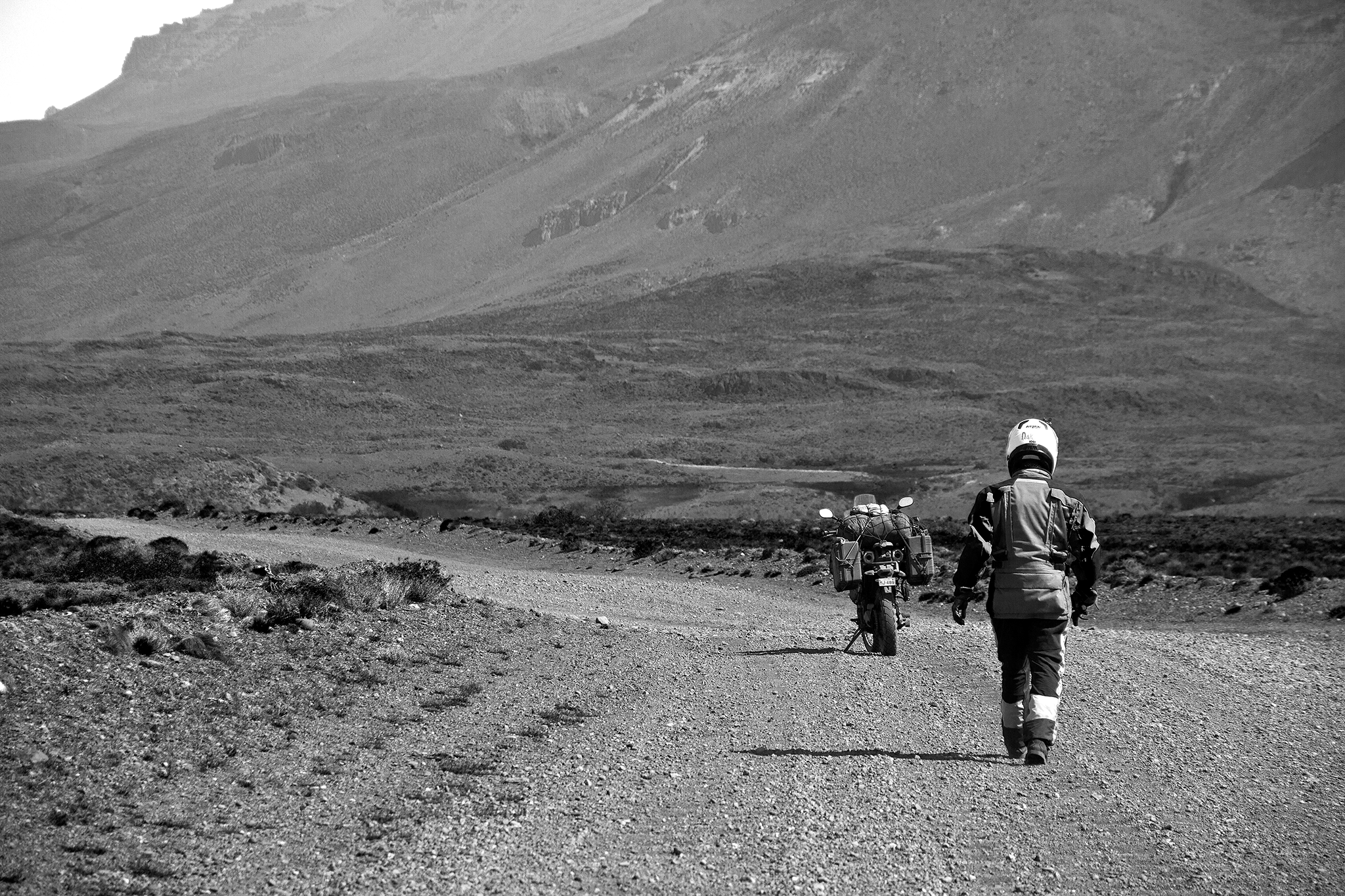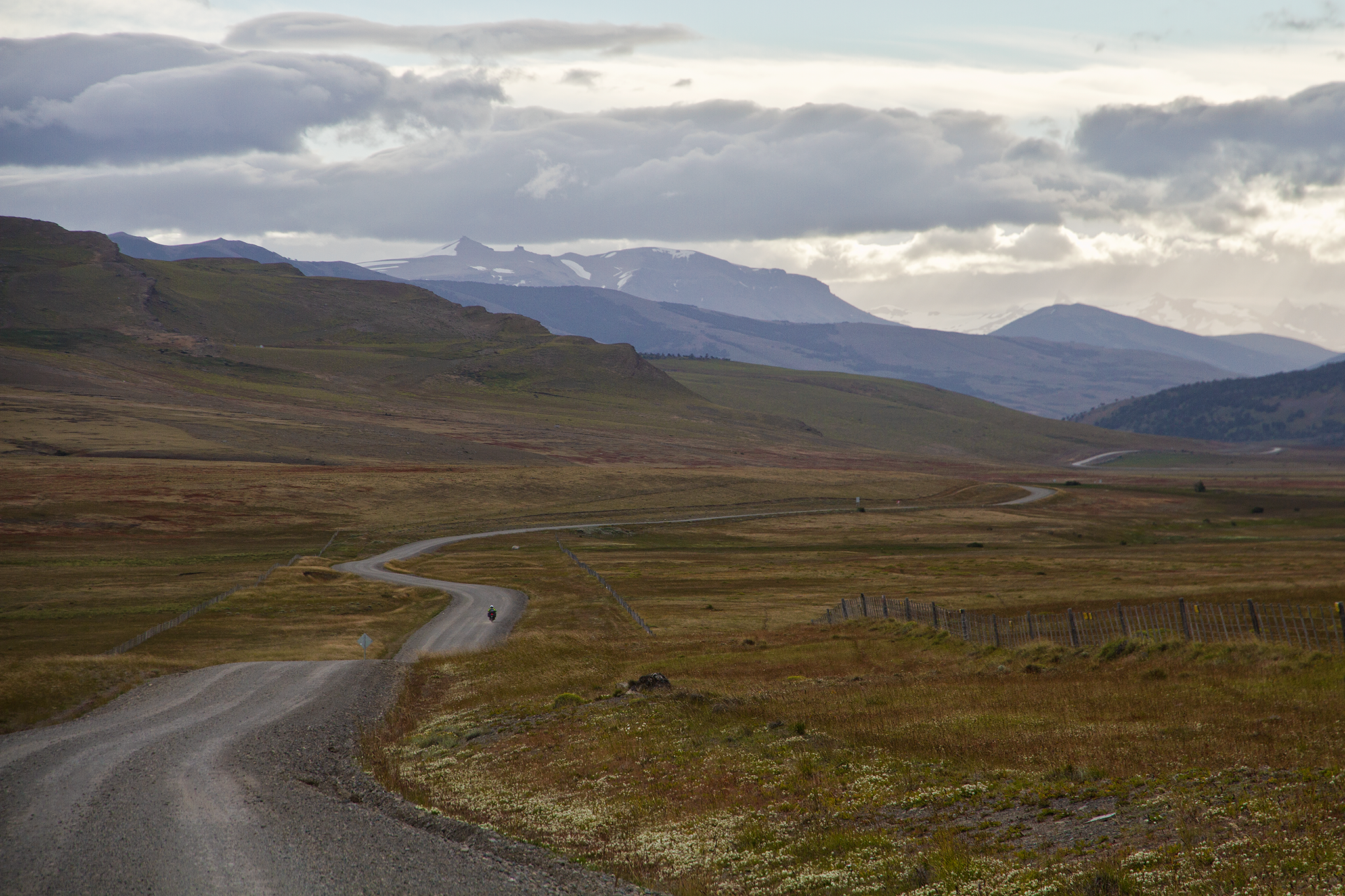I had just wrapped up 8 months of backpacking and volunteering through Bolivia, Peru, and Chile at the end of 2012 when I got a job offer to work as an engineer in a desalination plant in Antofagasta, Chile. The start date was in February 2013, giving me over a month to do as I pleased. Some months prior, during a Skype call with my dad from my second story apartment in La Paz, Bolivia, a seed had already been planted; one day we’d ride motorcycles to the tip of South America. Fate took wind of our dreams and offered up a short window during which my dad and his business partner, Didier, could get away from their work for a month. I had already bought a motorcycle (a 2010 Kawasaki KLR 650), so it took little convincing for them to meet me in Temuco and ride the famed Carretera Austral and Ruta 40 down to the tip of South America and back.
This story was developed into a full article that was featured in ADVMoto and Overland Magazine.

With dreams of carving fast gravel lines through pristine valleys and soaring glaciated peaks, we stepped out of our cozy guest house in Puerto Montt ready to earn our first stretch of austral dirt. Two short ferry-rides and 100 miles later we staggered into a stuffy boarding house from under blackened skies, utterly defeated. As Oregonians, we know better than to trust a sky to remain blue for long. Yet, we convinced ourselves that this rule wouldn’t apply during our month of travel through the rainiest region of the world. Weather is quick to put you in your place in Patagonia. An apron-clad woman peeked her head out from the kitchen doorway at the extranjeros locos, grinned knowingly and went to work preparing three additional meals. Outside, droplets of rain sizzled and vaporized on hot exhausts.

The man-made spine of Chilean Patagonia is the unpaved Ruta 7, better-known as the Carretera Austral. Spanning 770 miles from Puerto Montt to Villa O-Higgins, the unpaved highway meanders through dense Valdivian temperate rain forests, glacial fjords and Andean mountains. At a handful of small towns along the way, one can opt to cross the border into Argentina by braving the hanging valleys of the Andes and be spit out into the sprawling emptiness of golden Patagonian steppe.


Dad’s eyebrows raised slightly at the skid marks leading toward my spot in the road, where I was in the process of lifting the motorcycle back onto its wheels. “Ça va?”
“Yea. I fell, but I’m ok.” My shoulder ached, but it was my pride that had taken the brunt of the fall and he knew it.
Dad looked the bike up and down, already coming up with solutions for the broken blinker and cracked plastics as if his garage and tool cabinet were just down the road. Like clockwork, Didier leaned back in his saddle and pitched in with a few jokes. A good riding partner knows how to get a bike back on the road. A great riding partner knows how to ensure your spirits are lifted as well.



I stood at the entrance of the inconspicuous shack, locking eyes with the two Belgian shepherds eyeing me suspiciously. The officer waved me forward. I unconfidently handed him my awkward bundle of temporary vehicle registration papers, Belgian passport, Chilean ID card, and USA driver’s license. My heart sank as it became obvious from his furrowed brow this was the first time he’d been presented with such a panoply of international paperwork. “Espéreme,” he said as he picked up a phone. I waited quietly. After describing what sat in front of him to whoever was on the other end, the officer listened to a muffled voice. A long, drawn-out silence ensued. “Sí, mi comandante.” He hung up the phone. The wind howled like a banshee outside. The windows vibrated in their frames. Filtered light danced on the officer’s desk as he flipped the papers mischievously through his fingers. Every once in a while he’d glance upward, his eyes meeting mine. At times, his hand reached agonizingly close to the stamp, only to retract it as he appeared to contemplate a new piece of information. My fate was in his control. He knew it. He loved it. Then, as if buckling under the weight of his own fantastical power, he clumsily stamped my passport and shooed me toward the exit. “Pásele.” Argentina, scoured in wind, lay ahead.




Although each day of riding offered serious “helmet time” for self-reflection, we spent evenings swapping stories of teenage stupidity, past regrets and far-off dreams. With cuts of meat sizzling next to the glowing coals of an Argentinian asado, I listened to Dad relive the time he plugged a hemorrhaging crankcase with a piece of gum in the Spanish deserts, 30 years ago. Didier’s tales of avalanche rescues as part of a ski patrol unit in the French Alps kept me on the edge of my seat, questioning my own alpine ambitions.



Knowing our paths would soon diverge, we let off the throttles and allowed ourselves to be driven only by our desire to relish the riding instead of the need to pursue a destination. South America has a way of reshaping the way you plan your day to match its relaxed pace of life.



Our trio crisscrossed barren plains, navigated to forgotten border posts and sped through towering larch forests to return to the location of our initial rendezvous just north of Temuco, Chile. The month of Patagonian motorcycle splendor came to an end as I watched a friend and a father rumble slowly away, around a bend and out of sight.

I stood next to my black and blue KLR the following day, staring at it as if trying to establish the kind of bond shared between a pair of lifelong riding partners. A mechanical gaze stared back at me. The muddied and scarred heap of metal and plastic wouldn’t offer me the conversations and laughter that Dad and Didier did, but I could sense the first murmurs of a unique trust found only between man and machine. With a grin slowly spreading across my face, I swung my leg over the Kawasaki like I had done hundreds of times before, cranked the starter and pointed my thumping companion north. The arid moonscapes of the Atacama beckoned.

















